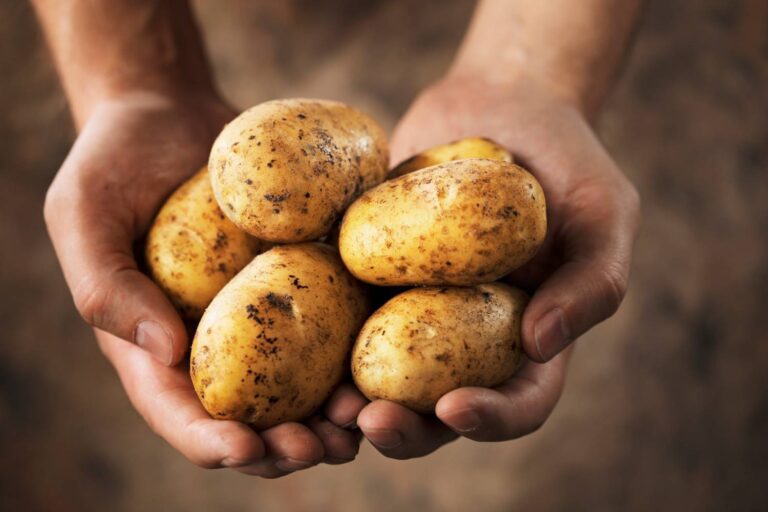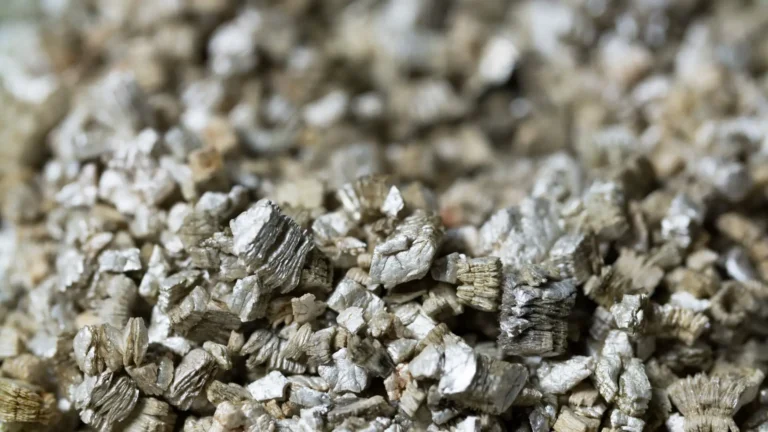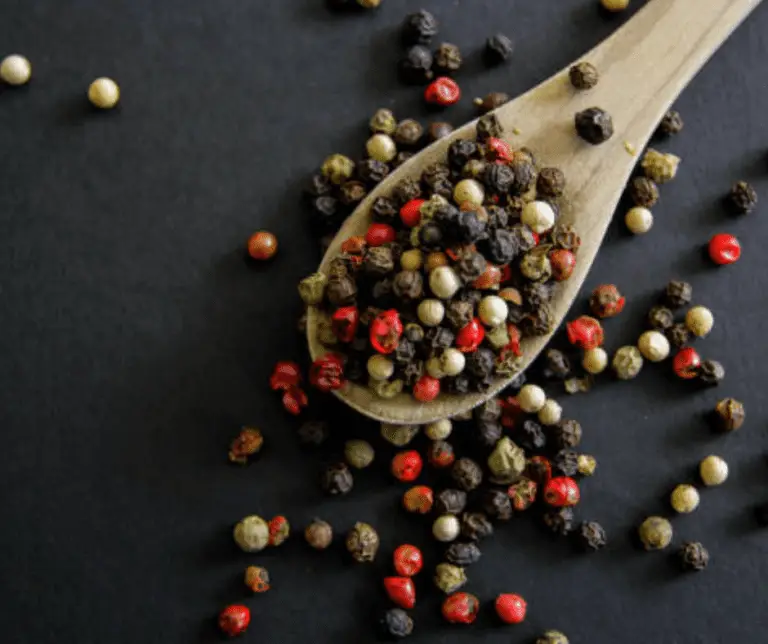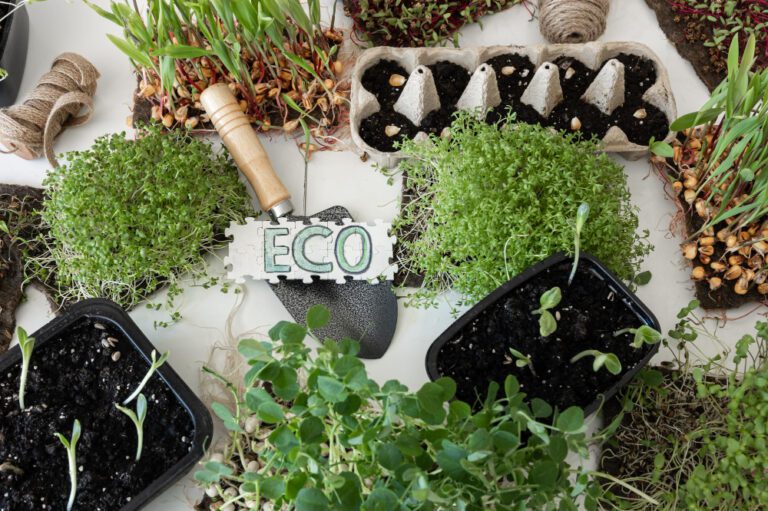Hydroponic Seed Starting: A Beginner’s Guide
Table of Contents
How to Choose the Right Seeds for Hydroponic Seed Starting
When selecting seeds for hydroponic seed starting, it is essential to choose varieties that are well-suited for this growing method. Opt for seeds that have a high germination rate, such as lettuce, herbs, or tomatoes, as they tend to thrive in hydroponic systems. Additionally, look for seeds that are disease-resistant and adapted to indoor growing conditions to increase the chances of successful cultivation.
Consider factors like the days to maturity and the plant’s growth characteristics when choosing seeds for hydroponic seed starting. Some plants, like microgreens or leafy greens, have a quick turnaround time, making them ideal for continuous harvesting in hydroponic setups. On the other hand, plants like peppers or cucumbers may require a longer growth period, so plan accordingly based on your system’s capabilities and your gardening goals.

The Importance of Using Quality Growing Mediums for Hydroponic Seed Starting
Using quality growing mediums is essential for successful hydroponic seed starting. The growing medium serves as the foundation for the young plants, providing stability and support while also delivering crucial nutrients. It is important to choose a medium that is well-draining to prevent waterlogging, which can lead to root rot and other issues. Quality growing mediums like coconut coir, perlite, or vermiculite offer good aeration and moisture retention properties, creating a healthy environment for seed germination and root development.
Moreover, the growing medium plays a significant role in seedling health and growth. It aids in the absorption and distribution of essential nutrients, ensuring that the young plants have access to the elements necessary for their development. A quality growing medium also helps maintain proper pH levels, which is crucial for nutrient uptake by the plant roots. By investing in a high-quality growing medium, hydroponic gardeners can provide their seedlings with the best possible start, setting the stage for robust growth and successful cultivation.

Understanding the Different Types of Hydroponic Systems for Seed Starting
Hydroponic systems offer various options for starting seeds indoors, providing a controlled environment conducive to optimal plant growth. One popular system is the deep water culture (DWC) system, where plants are suspended in nutrient-rich water, allowing their roots to continuously access essential nutrients. This method is efficient and straightforward, making it ideal for beginners in hydroponic gardening. Another common system is the nutrient film technique (NFT), where a thin film of nutrient solution flows over the plant roots, ensuring consistent feeding and oxygenation. NFT systems are space-saving and water-efficient, making them suitable for those with limited indoor gardening space.
Aeroponic systems are another advanced option for seed starting, utilizing a misting mechanism to deliver nutrients directly to the roots. This method promotes rapid growth and increased nutrient uptake, resulting in healthier and stronger seedlings. Additionally, drip systems provide a more traditional approach by delivering water and nutrients through tubes to individual plants. This method allows for precise control over the amount of moisture and nutrients each plant receives, facilitating optimal growth conditions. Choosing the right hydroponic system for seed starting depends on factors such as space availability, budget, and level of expertise, so it’s important to research and select the system that best suits your needs and gardening goals.
Here’s a summary of different hydroponic systems for seed starting:
| Hydroponic System | Description |
| Wick Systems | Simple and low-cost system. Uses a wick to transport nutrient solution to plant roots. Ideal for beginners and small-scale setups. |
| Deep Water Culture (DWC) | Plants suspended in a nutrient-rich solution. Oxygen supplied through air stones or diffusers. Great for fast growth and easy monitoring. |
| Nutrient Film Technique (NFT) | Thin film of nutrient solution flows over plant roots. Roots exposed to air, promoting oxygen uptake. Suitable for compact spaces and continuous nutrient supply. |
| Ebb and Flow (Flood and Drain) | Nutrient solution floods growing medium periodically. Then drains away, allowing roots to breathe. Versatile and adaptable for various plant types. |
Feel free to explore these systems based on your specific needs and space availability!
Tips for Properly Setting Up Your Hydroponic Seed Starting System
When setting up your hydroponic seed starting system, it’s crucial to ensure all components are clean and sterilized to prevent any potential contamination. Use a mild bleach solution to disinfect your trays, growing medium, and any tools you will be using. Maintaining a sterile environment at the start will go a long way in promoting healthy seedling growth.
Proper lighting is essential for the success of your hydroponic seed starting system. Ensure your grow lights are positioned at the correct distance above your seedlings to provide optimal light intensity without causing light stress. Consider using full-spectrum LED grow lights, as they are energy-efficient and provide the necessary light spectrum for robust seedling development. Striking the right balance between light duration and intensity will help your seedlings thrive during the critical early stages of growth.
Here are some helpful tips for properly setting up your hydroponic seed starting system:
| Step | Description |
| 1 | Choose a Suitable System: Start by selecting an appropriate hydroponic system for seed starting. Consider factors like space, budget, and ease of use. Common systems include Deep Water Culture (DWC), Nutrient Film Technique (NFT), and Ebb and Flow (Flood and Drain). |
| 2 | Clean and Sterilize the System: Before assembling your system, ensure that all components (reservoir, tubing, net pots, etc.) are thoroughly cleaned and sterilized. This prevents the growth of harmful pathogens and ensures a healthy environment for seedlings. |
| 3 | Add the Growing Medium: Choose a suitable growing medium (such as rock wool, coconut coir, or perlite) to support seed germination. Fill your net pots or seed trays with the medium. |
| 4 | Set Up the Water Pump and Air Pump: Install the water pump to circulate the nutrient solution and the air pump to provide oxygen to the roots. Proper oxygenation is crucial for healthy seedling development. |
| 5 | Fill the Reservoir with Water and Nutrient Solution: Add water to the reservoir, ensuring it covers the net pots or seed trays. You can use standard tap water initially; worry about pH adjustments later. Mix in the appropriate nutrient solution according to the seedling stage. |
| 6 | Prepare the Seeds: Select high-quality seeds from a reliable source. Pre-soak the seeds (optional) to kickstart germination. Disinfect the seeds (optional) to prevent fungal or bacterial issues. |
| 7 | Place the Seeds in the Growing Medium: Soak each starter plug (e.g., Rapid Rooter) in water and place it in a net pot. Drop 2-3 seeds into each starter plug. This ensures that at least one seed will sprout. |
| 8 | Maintenance: As your seeds sprout, maintain the system by monitoring water levels, nutrient concentration, and temperature. Consider using a transparent cover to retain moisture and increase the system’s temperature. |
The Role of Nutrients in Successful Hydroponic Seed Starting
Nutrients play a crucial role in the successful growth of plants in hydroponic systems, especially during the seed starting phase. Providing the right balance of essential macro and micronutrients is vital for the healthy development of young seedlings. Macronutrients such as nitrogen, phosphorus, and potassium are key for overall growth, while micronutrients like iron, zinc, and manganese are essential for specific metabolic functions within the plant. Ensuring that the nutrient solution is properly formulated and regularly monitored is essential to support optimal germination, root development, and early growth stages in hydroponic seed starting systems.
In addition to the essential nutrients required for plant growth, it is important to understand the dynamic nature of nutrient uptake in hydroponic systems. Seedlings have specific nutrient requirements at different growth stages, and adjusting the nutrient solution accordingly is crucial for preventing deficiencies or imbalances that can hinder growth. Monitoring and adjusting nutrient levels based on the plants’ developmental stages and growth patterns is key to maximizing the yield and quality of plants grown hydroponically from seed.
Common Mistakes to Avoid When Starting Seeds Hydroponically
When starting seeds hydroponically, it’s crucial to avoid common mistakes that can hamper the growth and development of your plants. One common mistake is not properly sterilizing your equipment and growing environment. Contaminants can disrupt the delicate balance needed for seed germination and early seedling growth. Ensure all tools, containers, and nutrient solutions are thoroughly cleaned and sanitized to prevent any harmful pathogens from hindering your plant’s progress.
Another mistake to steer clear of is neglecting to monitor and adjust pH levels regularly. pH plays a vital role in nutrient uptake by plants, and an imbalance can lead to nutrient deficiencies or toxicities. Invest in a reliable pH meter and test your nutrient solution frequently to maintain the optimal pH range for healthy plant growth. By avoiding these common errors, you can set yourself up for success in your hydroponic seed starting journey.
The Benefits of Using Grow Lights for Hydroponic Seed Starting
Grow lights are an essential component for successful hydroponic seed starting, providing the necessary light spectrum for optimal plant growth. Unlike traditional sunlight, grow lights can be tailored to specific plant needs, ensuring consistent and sufficient light exposure throughout the seedling stage. This controlled environment allows for year-round cultivation and the ability to grow a wider variety of plants, regardless of outdoor conditions. Additionally, the adjustable intensity and duration of grow lights enable growers to mimic natural sunlight cycles, promoting strong and healthy seedling development.
Moreover, using grow lights in hydroponic seed starting setups offers flexibility in terms of location and setup. Whether you have limited access to natural sunlight or prefer to grow plants indoors for greater control over environmental factors, grow lights provide a reliable alternative for sustaining plant growth. With advancements in LED technology, energy-efficient grow lights are now available, reducing electricity costs while maximizing plant growth potential. Investing in quality grow lights can significantly improve seedling success rates and overall crop productivity in hydroponic systems.

Maintaining Proper Temperature and Humidity Levels for Hydroponic Seed Starting
Maintaining proper temperature and humidity levels is crucial for the success of your hydroponic seed starting endeavors. Seeds require specific environmental conditions to germinate and grow optimally. For most plant varieties, the ideal temperature for germination falls between 70-75°F (21-24°C). Maintaining a consistent temperature within this range can help promote uniform germination and robust seedling growth. Additionally, adequate humidity levels in the range of 50-70% can prevent desiccation of seeds and seedlings, ensuring they remain healthy and hydrated throughout their early stages of development.
Fluctuations in temperature and humidity can negatively impact the germination process and overall growth of your hydroponic seedlings. Sudden temperature shifts or prolonged exposure to high or low humidity levels can lead to poor germination rates, damping off, or stunted growth. To avoid these issues, invest in a reliable thermometer and hygrometer to monitor environmental conditions within your hydroponic setup consistently. Implementing proper ventilation systems and using humidity trays or misters can help maintain stable conditions for your seeds and seedlings, creating an ideal environment for successful hydroponic seed starting.
The Importance of Adequate Air Circulation in Hydroponic Seed Starting
Adequate air circulation plays a crucial role in hydroponic seed starting by ensuring that plants receive the necessary supply of carbon dioxide while preventing the buildup of excess moisture around the plants. Insufficient air circulation can lead to issues like mold growth, root rot, and poor nutrient uptake, ultimately stunting the growth and development of seedlings. By providing good air circulation within your hydroponic setup, you can help create an optimal growing environment for your plants, promoting healthier and more vigorous growth.
Without proper air circulation, plants may struggle to thrive, as stagnant air can hinder the exchange of gases essential for photosynthesis. Additionally, adequate airflow helps strengthen plant stems and leaves by promoting transpiration and reducing the risk of fungal diseases. Investing in fans or using an air pump to create gentle airflow can significantly benefit your hydroponic seed starting system, contributing to better plant vigor, improved nutrient absorption, and overall higher success rates in your gardening endeavors.
Monitoring pH Levels for Healthy Hydroponic Seed Starting
pH levels play a critical role in the success of your hydroponic seed starting endeavor. Monitoring and maintaining the pH of your nutrient solution is essential for ensuring optimal nutrient uptake by your plants. Different plant species have specific pH preferences, so it is important to tailor the pH of your hydroponic system accordingly. Deviations from the ideal pH range can lead to nutrient deficiencies or toxicities, negatively impacting plant growth and development. Regularly testing the pH of your nutrient solution using a pH meter and adjusting it as needed will help create an environment conducive to healthy seedling growth.
Fluctuations in pH levels can occur due to various factors, such as water quality, nutrient deficiencies, or the breakdown of organic materials in the system. Understanding the factors that influence pH levels in your hydroponic setup is crucial for maintaining a stable and optimal growing environment. By keeping a log of pH measurements and observing any patterns or trends, you can proactively address any issues that may arise. Remember, consistency is key when it comes to pH management in hydroponic seed starting, as even slight deviations can have significant consequences on plant health and growth.

How to Transplant Seedlings from Hydroponic Systems to Larger Containers
When transplanting seedlings from hydroponic systems to larger containers, it is crucial to handle the delicate roots with care to ensure the health and vitality of the plants. Gently remove the seedlings from the hydroponic medium, being mindful not to damage the roots during the process. Prepare the larger containers by filling them with a suitable growing medium that provides adequate aeration and moisture retention for the plant’s future growth.
Once the seedlings are carefully removed, create a small hole in the new container to accommodate the roots. Place the seedling in the hole, ensuring that the roots are spread out and not compacted. Gently fill the remaining space with the growing medium, pressing down lightly to secure the seedling in place. Water the newly transplanted seedlings thoroughly to help them establish in their new environment and continue to monitor their growth and health as they adjust to the larger containers.
Dealing with Pests and Diseases in Hydroponic Seed Starting
When cultivating plants via hydroponic seed starting, dealing with pests and diseases is crucial to ensure successful growth. Prevention is key to averting these issues. Regularly inspect your plants for any signs of pests like aphids, mites, or whiteflies. Introducing beneficial insects such as ladybugs or predatory mites can help naturally control pest populations. Maintaining a clean growing environment by properly sterilizing equipment and keeping the area free of debris can also deter diseases.
In the event of a pest or disease infestation, swift action is necessary to mitigate the damage. Consider using organic insecticidal soaps or neem oil to combat pests effectively. For fungal or bacterial diseases, treatments like copper fungicides or hydrogen peroxide solutions can be beneficial. Remember to isolate infected plants to prevent the spread of diseases throughout your hydroponic system. Monitoring your plants closely and addressing any issues promptly will significantly increase your chances of a successful harvest.
The table below shows tips on dealing with pests and diseases during hydroponic seed starting:
| Step | Action | Description |
| 1 | Set Up the Hydroponic System | Choose a suitable hydroponic system (e.g., nutrient film technique, deep water culture, or vertical systems). Clean and sterilize the system. Add the growing medium (options include rockwool, perlite, and vermiculite). Set up the water pump and air pump. Fill the reservoir with water and nutrient solution. |
| 2 | Prepare the Seeds | Select high-quality seeds from reputable suppliers specializing in hydroponic cultivation. Optionally, pre-soak the seeds. Disinfect the seeds if desired. Place the seeds in the chosen growing medium. |
| 3 | Provide Optimal Growing Conditions | Maintain proper temperature. Regulate humidity levels. Ensure adequate lighting. Monitor pH levels. Provide sufficient airflow. |
| 4 | Germinate the Seeds | Place the seeds in a warm, dark environment. Monitor moisture levels. Observe signs of germination. Transfer germinated seeds to the hydroponic system. |
| 5 | Maintain and Monitor the Seedlings | Adjust nutrient solution levels. Control pH levels. Monitor water and temperature. Prevent pest and disease infestations. Trim and thin out seedlings as necessary. |
| 6 | Transplanting | Prepare final growing containers. Carefully remove seedlings from the hydroponic system. Transfer seedlings to their new containers. Provide proper care and continue monitoring. |
| 7 | Troubleshooting and Tips | Address common issues and solutions. Follow tips for successful hydroponic seed starting. |
| 8 | Harvesting and Beyond | Follow harvesting guidelines. Practice post-harvest care. Reuse or clean the hydroponic system. Plan for the next crop. |
Remember to monitor your plants closely, prevent pests and diseases, and maintain optimal conditions throughout the seed starting process.
The Process of Hardening Off Seedlings Grown Hydroponically
Hardening off seedlings grown hydroponically is a crucial step in transitioning these delicate plants from their controlled indoor environment to the outdoor conditions where they will continue to flourish. This process involves gradually exposing the seedlings to the elements over a period of time, allowing them to adapt to fluctuations in temperature, sunlight intensity, and wind. By acclimating the seedlings slowly, you can prevent shock and ensure their successful growth in the new environment.
To begin hardening off seedlings, it is recommended to start by placing them in a sheltered outdoor spot with limited direct sunlight and wind for a few hours each day. Gradually increase the exposure to sunlight and wind over a period of 7-10 days, monitoring the seedlings closely for any signs of stress or damage. It is important to water the seedlings appropriately during this period to prevent them from drying out in the changing conditions. Once the seedlings have adjusted to the outdoor environment, they can be transplanted into the garden or larger containers for continued growth and development.
Harvesting and Caring for Plants Grown from Hydroponic Seed Starting
Harvesting plants grown from hydroponic seed starting requires careful attention to timing and technique. As your plants reach maturity, closely monitor their readiness for harvest based on the specific crop’s growth characteristics. For leafy greens like lettuce or herbs, a common indicator is the number of true leaves developed. Once your plants are ready, use sharp, clean tools to harvest them to minimize damage and ensure optimal shelf life and flavor. Properly handling harvested plants is crucial for maintaining their freshness and nutritional quality. Washing with clean water, drying gently, and storing in appropriate conditions will help preserve the flavor and health benefits of your hydroponically grown produce.
Caring for plants post-harvest is equally essential in maximizing their longevity and quality. Ensure proper storage conditions, such as refrigeration or controlled environments, to retain freshness. Regularly inspect your stored produce for any signs of spoilage or decay, discarding any affected items promptly to prevent contamination. Utilize the harvested plants in a timely manner to enjoy peak flavor and nutrient content. By following these post-harvest care practices, you can savor the fruits of your hydroponic gardening efforts and reap the benefits of homegrown, healthy produce year-round.

Tips for Successful Year-Round Hydroponic Seed Starting
Hydroponic seed starting offers a year-round gardening solution with its controlled environment, but success hinges on a few crucial tips. Firstly, ensure consistent monitoring and adjustment of nutrient levels to meet the changing needs of your plants throughout the seasons. Different crops may require varying nutrient concentrations at different growth stages, so staying vigilant is key to optimal growth and development. Additionally, maintain a detailed log of your planting schedule and results to fine-tune your year-round hydroponic seed starting processes for improved efficiency and yield.
Secondly, consider diversifying your crop selection to cater to different temperature and light preferences. By staggering your plant varieties based on their ideal growing conditions, you can maximize your hydroponic system’s productivity year-round. This approach not only hedges against potential challenges due to fluctuations in environmental factors but also allows for a more dynamic and rewarding gardening experience. Remember to research the specific requirements of each crop to create a harmonious and successful year-round hydroponic seed starting operation.
To Know More About Hydroponic Seed Starting, Watch This Video!
Can I use any type of seeds for hydroponic seed starting?
It is important to choose seeds that are suitable for hydroponic growing, such as those that are disease-resistant and suited for indoor environments.
How often should I check the pH levels in my hydroponic seed starting system?
It is recommended to monitor the pH levels daily and make adjustments as needed to ensure optimal growing conditions for your plants.
What are some common pests and diseases that can affect plants grown hydroponically?
Some common pests and diseases to watch out for include aphids, spider mites, and powdery mildew. It is important to regularly inspect your plants and take preventive measures to avoid infestations.
Can I reuse the growing medium for hydroponic seed starting?
While some growing mediums can be reused, it is generally recommended to start with fresh, sterile growing medium for each new crop to prevent the spread of diseases and ensure healthy plant growth.
How can I ensure proper air circulation in my hydroponic seed starting system?
To promote adequate air circulation, consider using fans or ventilation systems in your growing area and avoid overcrowding plants to allow for proper airflow.
What is the process of hardening off seedlings grown hydroponically?
Hardening off seedlings involves gradually exposing them to outdoor conditions, such as sunlight and wind, to acclimate them to their new environment before transplanting them into larger containers or into the ground.






